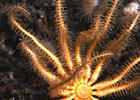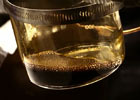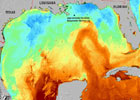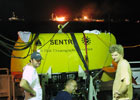Please note: You are viewing
the unstyled version of this website. Either your browser does not support CSS
(cascading style sheets) or it has been disabled. Skip
navigation.
 Biology
BiologyOil affects organisms in many ways, not all visible and not always negative. Some microbes and other animals thrive on hydrocarbons, and even trace amounts of some chemicals in oil can have long-lasting genetic impacts in a species. Biologists are slowly piecing apart this complicated relationship between oil in the marine environment and the plants and animals that call the ocean home.  Chemistry
ChemistryOil is a complex mixture containing hundreds of different substances, each one with unique chemical and physical properties. Understanding the chemistry of oil and the chemical processes that arise when oil enters the ocean are key parts of disentangling the full range of real and potential impacts of a spill.  Circulation & Transport
Circulation & TransportOne of the key questions in any accidental or natural release of oil into the ocean is: Where will it go? WHOI scientists have amassed a detailed understanding of currents and can monitor or model surface and deep-sea movement of oil in the ocean over time and at a range of physical scales.  Engineering & Support
Engineering & SupportPart of WHOI's mission is to support the oceanographic community by operating a fleet of research vessels and vehicles and by developing new tools and instruments. Many of these have been adapted to or designed specifically for the challenges associated with studying oil in the marine environment. Last updated: July 28, 2014 | |||||||||||
Copyright ©2007 Woods Hole Oceanographic Institution, All Rights Reserved, Privacy Policy. | |||||||||||

